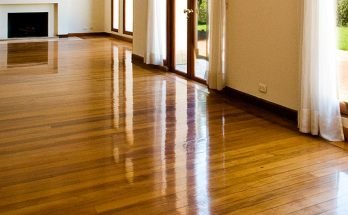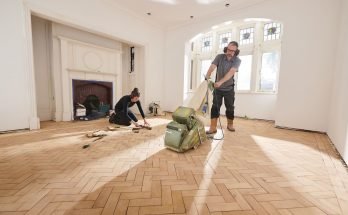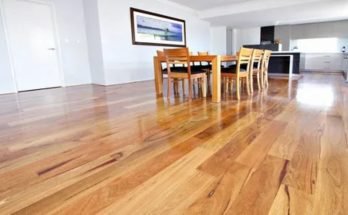Timber flooring is a popular choice for homeowners seeking a timeless, natural, and warm aesthetic. While it offers numerous advantages, it’s crucial to acknowledge and navigate the potential drawbacks.
Explore the top five disadvantages of timber flooring, providing insights to help you make an informed decision for your home.
Susceptibility to Moisture Damage:
Timber is a porous material, and as such, it is susceptible to moisture damage. Exposure to excessive humidity, spills, or water leaks can lead to swelling, warping, or cupping of the wood. This susceptibility makes timber flooring less suitable for areas prone to high moisture levels, such as bathrooms or basements. Proper sealing and maintenance are essential to mitigate moisture-related issues.
Prone to Scratches and Dents:
Despite its durability, timber flooring is not immune to scratches and dents. Heavy furniture, pet claws, or high-heeled shoes can leave marks on the surface over time. While hardwoods are generally more resilient, softer woods like pine or fir may be more prone to visible wear and tear. Area rugs, furniture pads, and regular maintenance can help minimise the impact of scratches and dents.
Sensitivity to Temperature Changes:
Timber is sensitive to fluctuations in temperature and humidity. Changes in environmental conditions can cause the wood to expand or contract, leading to gaps between boards or buckling. It’s important to maintain a consistent indoor climate and use proper acclimatisation techniques during installation to minimise the impact of temperature-related issues.
Initial Cost and Installation Expenses:
While the long-term durability and aesthetic appeal of timber flooring are undeniable, the initial cost can be a significant drawback for some homeowners. High-quality hardwoods, in particular, can be expensive, and the installation process may require skilled professionals, adding to the overall expenses. However, many find that the investment pays off over time, considering the longevity and value that timber flooring adds to a home.
Maintenance Requirements:
Timber flooring demands regular maintenance to preserve its appearance and structural integrity. Periodic refinishing or resealing may be necessary, depending on the wear and tear the floor experiences. Additionally, proper cleaning is crucial to prevent the buildup of dust and debris, which can contribute to scratches and dullness. While some homeowners appreciate the natural aging process of timber floor polishing, others may find the maintenance requirements a potential drawback.

Navigating the Drawbacks:
Mitigating Moisture Issues:
To address moisture-related concerns, it’s essential to choose the right type of timber for specific areas in your home. Consider engineered timber flooring for basements or areas with higher humidity levels, as it is less prone to warping. Additionally, using area rugs and promptly addressing spills can help minimise the risk of moisture damage.
Preventing Scratches and Dents:
To reduce the impact of scratches and dents, consider using furniture pads under heavy items, placing area rugs in high-traffic areas, and trimming pet claws regularly. Opting for harder wood species, such as oak or maple, can also enhance the flooring’s resistance to visible wear.
Managing Temperature Sensitivity:
Maintain a consistent indoor climate by controlling temperature and humidity levels. Use air conditioning, humidifiers, or dehumidifiers as needed to create a stable environment. During installation, follow proper acclimatisation procedures to allow the wood to adjust to its surroundings.
Budgeting for Initial Costs:
While the upfront costs of timber flooring can be significant, it’s crucial to view it as a long-term investment. Consider the durability, aesthetic appeal, and potential increase in property value when evaluating the overall value proposition. Exploring different wood species and finishes can also help find options that align with your budget.
Embracing Maintenance Practices:
Regular maintenance is key to preserving the beauty of timber flooring. Implement a routine cleaning schedule using appropriate products and methods. Be proactive in addressing scratches or dents, and schedule refinishing or resealing as needed. By embracing maintenance practices, you can extend the life of your timber flooring and keep it looking pristine.
Conclusion:
While timber flooring boasts undeniable beauty and durability, acknowledging and navigating its potential drawbacks is essential for a successful and satisfying home investment. By understanding the challenges associated with moisture, scratches, temperature sensitivity, costs, and maintenance, homeowners can make informed decisions, implement preventative measures, and enjoy the timeless appeal of timber flooring for years to come.




